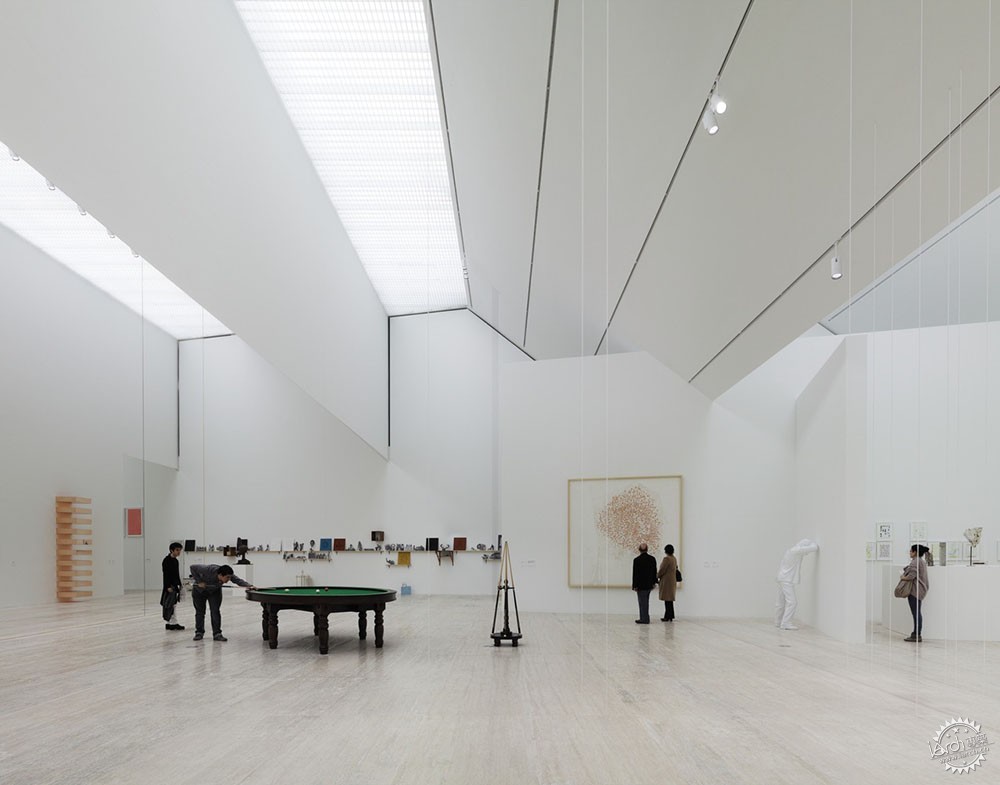
Image © Simon Menges
大师角度:灯光设计的6种方式
How the Masters See It: Six Ways to Design with Light
由专筑网李韧,王帅编译
灯光在建筑中的运用至关重要,好的灯光氛围不仅仅让空间充满质感与活力,同样也能很好地表达自然与科技信息。在Mary Guzowski的新书《建筑灯光的艺术》中,作者介绍了灯光的艺术与科学,并且详细地介绍了大师对于灯光的6种应用技巧。
表达环境与质感的自然采光
自然采光,即日光,是动态的环境现象,同时也可以用作建筑材料。它体现了时间的维度,因为光和影的运动揭示了日周期和季节周期的变化。在如今,一个星期为7天,每天24小时,人们在这种高强度的工作状况下与自然的关系日益远离,而日光却恰恰能够成为人们与自然联系的纽带。太阳、风雨等天气状况,能够很好地帮助人们了解自己的处境,甚至能够明确某个场所,并且了解当地的气候条件和生态现状。如果将被动式太阳能技术和生物气候设计策略相结合,那么还能够有效地减少能耗,带来一定的环境效益,提升人体舒适度。
而日光也是建筑媒介,同时是一种无形材料。通过与建筑形式、材料、肌理、反射的相互作用,光线能够表达天气状况和空气质量。光线的变化和空气能够刺激人们的感官,增强人们与物质世界的联系。
在《建筑灯光的艺术》一书中,运用了12个大师作品来表达当代建筑师对于光线的应用。这些建筑师都巧妙地运用光线来表达气候、场所,以及美学。另外,其中还分析了当代建筑采光方式的演变,其中有采光设计的科学进展、参数化立面设计和数字技术的影响,以及数字设计方法与工具的发展与进步。
Light is an important, if complex, tool in architecture. Not only does it lend atmosphere, texture, and vibrancy, but it is increasingly essential in an age where technology alienates us from nature. In this excerpt from Mary Guzowski's new book, The Art of Architectural Daylighting, she introduces the science and art of daylighting - and details six ways the masters approach the challenge.
Daylight as Phenomenon and Material
Daylight is a dynamic environmental phenomenon and an ephemeral architectural material. It embodies the dimension of time as the movement of light and shadow reveal the changing diurnal and seasonal cycles. In a digital age that runs 24/7, daylight is an antidote to our increasing alienation from nature. Daylight and the changing environmental forces of sun, wind, and weather help us to know “where we are” and “who we are” by rooting us in the ecological phenomena of a particular place, in that climate, and on that site. When coupled with passive solar and bioclimatic design strategies, daylight can reduce energy consumption and provide environmental benefits while enhancing human comfort, health, and well-being.
Daylight is also an architectural medium and the most intangible of materials. Light embodies the changing moods of the sky and qualities of place as it interacts with the building form, materials, surface textures, hues, and reflectivity. The varied and changing material and atmospheric effects of daylight can awaken the senses and further enhance our understanding of and relationship to the world in which we live.
My new book, The Art of Architectural Daylighting, uses twelve “masters of light” case studies to explore how contemporary architects have bridged the poetic and practical potentials of daylighting. These masters of light artfully reconcile the objective attributes of site, climate, and program with the subjective qualities of beauty and human experience. During my research for the book, I discovered that several trends have influenced the evolution of daylighting design in contemporary architecture, including: 1) advances in the science of daylighting design; 2) the impacts of parametric façade design and digital fabrication; and 3) advances in digital design methods and tools.

Image © Jeremy Bitterma
采光设计新趋势
在过去的十年里,“采光科学”已经逐步成熟,在建筑节能、低碳、减排、人体舒适度、提升生产力等方面,相关研究人员已经做出了卓越的贡献与成果,而在数字绘图、分析工具、指导策略、评估方法等方面也取得了重大进步,这些发展能够更好地促进建筑师对于采光设计策略等性能问题的研究。
随着科学的发展与进步,对于灯光参数的测量和定义方面的研究仍然存在着一些不足。灯光设计的分析理念同样需要通过关注自然光线的质量和维度进行深入分析。
建筑采光的设计过程较为复杂。建筑大师阿尔瓦•阿尔托认为,建筑是一个“合成过程”,这对于当今的灯光设计师来说似乎是一个警醒,建筑常常与科学相比较,但是建筑却并不是纯粹的科学研究,它更多的偏向于一个集合过程。其本质上就确定了它并不需要纯粹地分析与实验。建筑研究常常是艺术与灵感的汇和,其目的主要是将物质世界与人类生活更好融洽地结合在一起。 (1)
Daylight Design Trends
Over the past decade, the “science of daylighting” has matured as practitioners and building-science researchers have continued to demonstrate measurable benefits of daylighting in the areas of energy savings, carbon and greenhouse gas reductions, increased human comfort, and improved productivity and health. Great improvements have also been made in digital rendering, analysis tools, and an ever-increasing number of daylight metrics, guidelines, and assessment methods. These developments have benefited architects and designers in more effectively integrating daylight with other design and performance issues.
Yet, with the promise of scientific and analytical advances, there also lies a risk of too narrowly framing the parameters of daylighting to those that are measurable and empirically defined. An analytical perspective on daylighting design needs to be balanced with a focus on the qualitative and experiential dimensions of natural light.
Architectural daylighting and its design processes are complex, multi-faceted, and oftentimes messy and unpredictable. Alvar Aalto suggested that architecture is a “synthetic process,” which is a good reminder for today’s daylighting designers […] architecture has often been compared with science. […] But architecture is not a science. It is still the same great synthetic process. […] Its essence can never become purely analytical. Architectural study always involves a moment of art and instinct. Its purpose is still to bring the world of matter into harmony with human life.”(1)
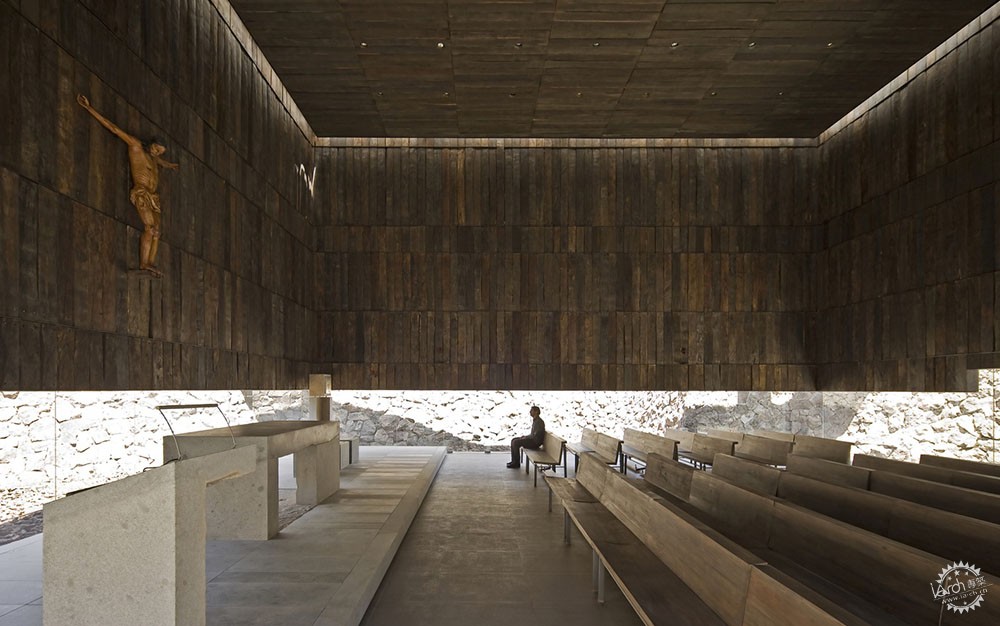
Image © Sergio Pirrone
路易斯•康的作品中常常强调灯光的秩序和空间意义,“建筑师对空间创造,空间也激发了建筑的使用功能。对于音乐家来说,一首动听的乐曲来源于其所听到。而建筑设计就应当有着充斥着光线的和谐空间。即使某个空间需要深邃的氛围,那么也应该通过光线来衬托它的黑暗。不同的空间由结构和光线定义而成。”对于建筑外立面的设计有时并不需要考虑室内空间质量、舒适度,以及性能。而当代照明设计的重大挑战则在于,要由内向外地综合考虑设计的整体效果,塑造有质感的空间表面,表达实际性能,以及审美特征。
案例研究
在书中有一些经典案例,其中有灯光设计的目的、建筑类型、尺度、地理位置。其中还分为了6个主题,即光线的排布、氛围光线、雕刻光线、结构光线、材质光线、组合光线。其中也包括了不同建筑师的不同设计作品,它们分别代表不同的设计理念,例如优先策略与方法等等方面。项目建筑师有Tadao Ando、Brad Cloepfil (Allied Works)、David Chipperfield、Mario Cucinella、Sverre Fehn、Steven Holl、Neil Gillespie (Reiach and Hall Architects)、 Vo Trong Nghia、Renzo Piano、Anu Puustinen、Ville Hara (Avanto Architects)、Cristián Undurraga、Peter Zumthor。他们认为采光是环境现象,同时也是动态的“建筑材料”,具有场所、形式、设计思路、材质、空间体验的能力。书中会通过不同的案例来说明采光方式,并且表达相关的设计意图、气候意义、项目理念、建筑策略。
Louis Kahn underscored the programmatic and spatial significance of daylight: “One may say that architecture is the thoughtful making of spaces. … It is the creating of spaces that evoke a feeling of appropriate use. To the musician a sheet of music is seeing from what he hears. A plan of a building should read like a harmony of spaces in light. Even a space intended to be dark should have just enough light from some mysterious opening to tell us how dark it really is. Each space must be defined by its structure and the character of its natural light.” The focus on the building façade and the surface of the envelope need not be at the expense of interior luminous and spatial qualities, experience, comfort, and performance. The challenge of contemporary daylighting is to explore the full potential of design from the inside out and the outside in; to mediate space and surface; and to celebrate practical performance benefits as well as aesthetic, experiential, and ecological dimensions.
Case Study Profiles
The case studies I selected for The Art of Architectural Daylighting illustrate a cross-section of daylighting design intentions, building types, scales, and geographic locations. The daylighting profiles are organized around six themes, including: 1) choreographed light, 2) atmospheric light, 3) sculpted light, 4) structured light, 5) material light, and 6) integrated light. The “masters of light” range from emerging architects to seasoned practitioners. They represent different design philosophies, priorities, methods, and approaches to natural light. Included are works by architects Tadao Ando, Brad Cloepfil (Allied Works), David Chipperfield, Mario Cucinella, Sverre Fehn, Steven Holl, Neil Gillespie (Reiach and Hall Architects), Vo Trong Nghia, Renzo Piano, Anu Puustinen and Ville Hara (Avanto Architects), Cristián Undurraga, and Peter Zumthor. They all approach daylight as an environmental phenomenon and a dynamic “building material” with evocative site, form-giving, programmatic, material, and experiential design potential. Each chapter explores a daylighting theme through the lens of two case studies to address related design intentions, climate and geographic implications, program considerations, and architectural strategies.
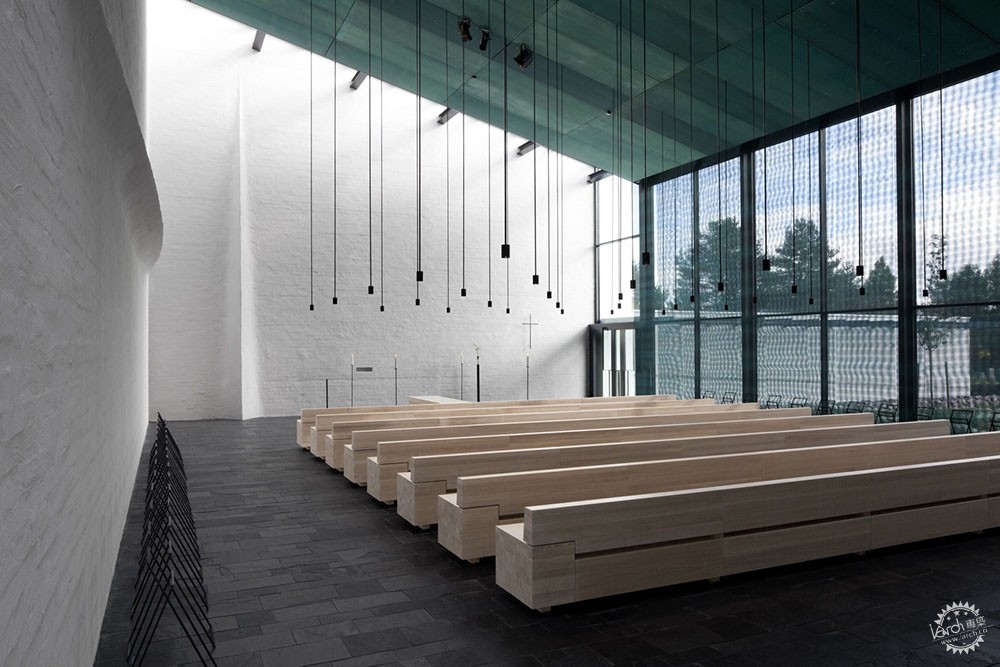
Image © Tuomas Uusheimo
光线大师
灯光具有定性和定量两个方面。一方面,光线有形、可测量、可预测,同时能够准确地说明太阳运动轨迹,另外,人们还可以通过不同的测量工具来表达光线属性。但是,自然光的维度则不可测量也不可预测。因此,实验所需的一些必要元素则可以用于开发难以预测的光线质量,因为它们能够及时地指出不同的天气状况、建筑形式、材料特征。开发与实验的过程本来就为灯光设计所固有。
奇妙的灯光设计和建筑形成具有创新意识的设计作品,这也鼓励了许多设计师。诸如阿尔瓦•阿尔托、路易斯•康、卡洛•斯卡帕、路易斯•巴拉干等大师的作品对现代建筑师都产生了深远的影响。因此,希望这本书中清晰、创新、优雅的当代作品能给年轻设计师们一些启发。在建筑中,更好地运用光线才能够发挥空间的最大潜力。
Masters of Light
Daylighting has both quantitative and qualitative dimensions. On the one hand, light is tangible, measurable, and predictable. The apparent movement of the sun can be precisely determined, and luminous attributes can be measured using standardized metrics such as lux, footcandles, daylight factors, and candelas per square meter. Yet, there is also a dimension of natural light that is unpredictable and immeasurable. There is a necessary element of intuition and experimentation required to discover the oftentimes unanticipated and emergent qualities of natural light as it interacts in time with changing site forces and sky conditions, architectural form, and material properties. The processes of discovery, experimentation, and serendipity are inherent to the art of daylighting design.
Daylighting masterpieces of exceptional beauty and architectural clarity form a body of seminal works that shape and inspire succeeding generations of designers. The legacy of the modern masters of light such as Alvar Aalto, Louis Kahn, Carlo Scarpa, and Luis Barragán continue to influence architects and daylighting designers to this day. It is hoped that the clarity, innovation, and elegance of the contemporary projects in the book will inform and inspire design practitioners, educators, and students in their own daylighting explorations. May The Art of Architectural Daylighting be of benefit to all those who seek to integrate the rich potential of daylighting into contemporary architectural design.
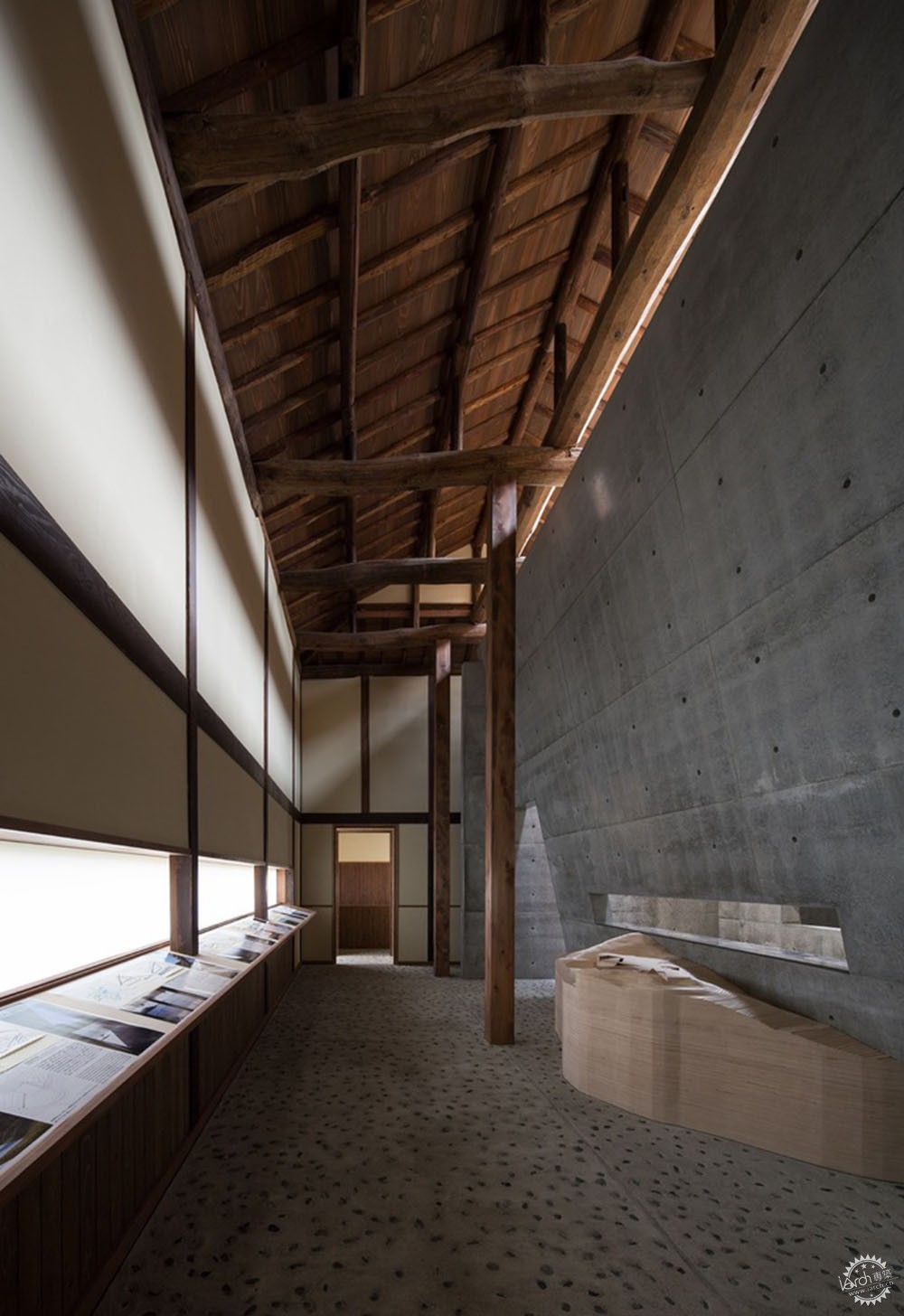
Image © Yoshihiro Asada
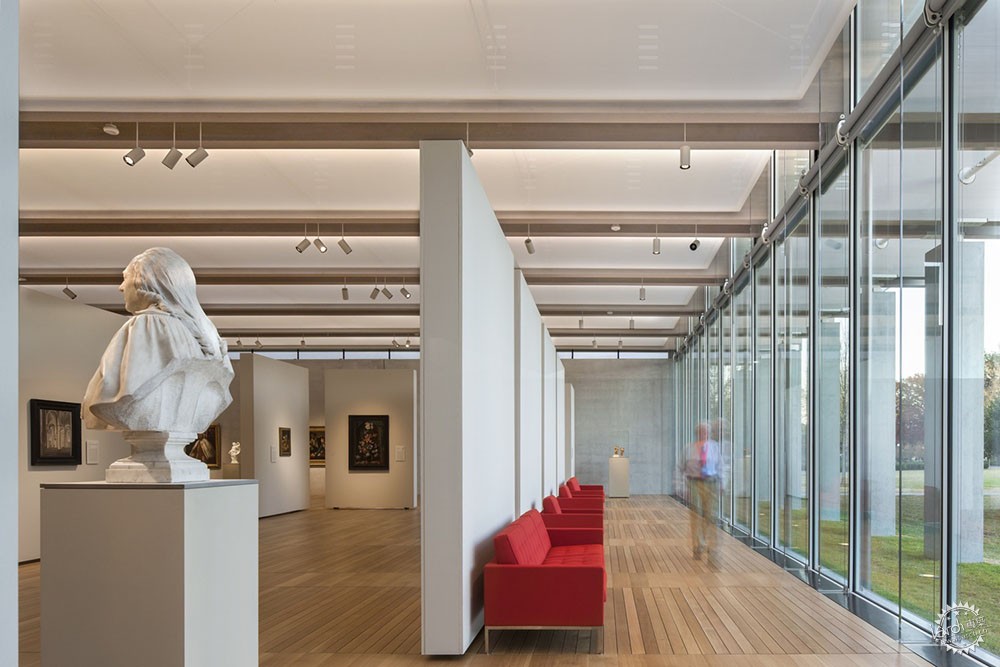
Image © Nic Lehoux
关于作者
Mary Guzowski是明尼苏达大学建筑学院的教授,同时也是《Carbon Neutral Design Project》的合作作者,她主要负责明尼苏达大学的可持续设计项目,其新书《建筑灯光的艺术》由Laurence King出版发行。
引用
Goran Schildt, Alvar Aalto: The Mature Years, New York: Rizzoli, 1989, 272.
Robert Twombly, Louis Kahn: Essential Texts, New York: W. W. Norton & Company, 2003, 68.
Author Bio
Mary Guzowski is a Professor in the School of Architecture at the University of Minnesota. She is a co-author of the Carbon Neutral Design Project and she oversaw the development of the MS in Sustainable Design Program at the University of Minnesota. Her latest book is The Art of Architectural Daylighting, published by Laurence King.
Citations
Goran Schildt, Alvar Aalto: The Mature Years, New York: Rizzoli, 1989, 272.
Robert Twombly, Louis Kahn: Essential Texts, New York: W. W. Norton & Company, 2003, 68.
|
|
